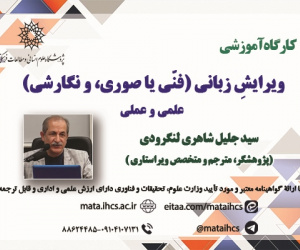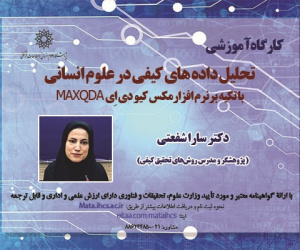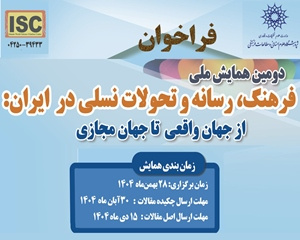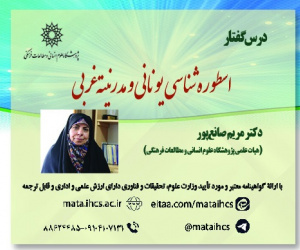مطالعه کیفی آسیب های فضای مجازی در دانش آموزان شهر اراک (مقاله علمی وزارت علوم)
درجه علمی: نشریه علمی (وزارت علوم)
آرشیو
چکیده
فضای مجازی دنیای جدیدی برای کشف و یادگیری دانش آموزان ایجاد کرده است. معلمان و خانواده ها دانش آموزان را تشویق می کنند تا از فضای مجازی برای یادگیری خود استفاده کنند؛ اما هر محتوایی در فضای مجازی برای دانش آموزان مناسب نیست. این اطلاعات مزایای بی شماری را برای کاربران فراهم می کند. با این حال، با تهدیدهای جدی نیز همراه است. هدف از تحقیق حاضر مطالعه کیفی آسیب های فضای مجازی در دانش آموزان متوسطه اول شهر بوده است. برای تحقق این هدف از روش کیفی استفاده شد. داده های این مطالعه از روش مصاحبه نیمه ساخت یافته گردآوری و از روش تحلیل مضمون برای تحلیل داده ها استفاده شده است. با کمک نمونه گیری هدفمند و با معیار اشباع نظری با 14 نفر از دانش آموزان متوسطه اول شهر اراک مصاحبه شد و نهایتاً داده های گردآوری شده در قالب 2 مضمون کلان و 8 مضمون سازمان دهنده، کدگذاری و تحلیل شد. نتایج نشان می دهد که شش دسته کلی آسیب های خانوادگی، آسیب های تحصیلی، آسیب های اجتماعی، آسیب های روانی، آسیب های مذهبی و آسیب های جسمی را می توان به عنوان آسیب های فضای مجازی دانش آموزان در نظر گرفت. دو دسته دلایل خانوادگی (خانواده گسسته و پریشان و سوء مدیریت و نظارت) و اجتماعی (فقدان سواد رسانه ای، فشارهای هنجاری و گذران اوقات فراغت) مهم ترین دلایل ایجاد آسیب های فضای مجازی مطرح شدند. در انتها باید بیان کرد که استفاده از فضای مجازی به بخش جدانشدنی از زندگی دانش آموزان تبدیل شده است و حضور بیشتر در این فضا بدون داشتن سواد رسانه ای و جذابیت فضای واقعی مثل خانواده و مدرسه می تواند اثرات جبران ناپذیری بر دانش آموزان داشته باشد.A Qualitative Study of Cyber Harms Among Students of Arak
Cyberspace has created a new world for students to explore and learn. Teachers and families encourage students to use cyberspace for learning, but not all contents on cyberspace are suited for students. The online data provides countless benefits to users; however, it comes with serious threats as well. The present research aims to study cyber harm qualitatively among lower secondary school students in Arak City. To achieve this goal, a qualitative method was adopted. The data was collected through semi-structured interviews and data analysis was conducted using thematic analysis. Using a purposive sampling method and based on theoretical saturation criteria, 14 students of the lower secondary school in Arak were interviewed. The collected data were coded and analyzed based on 2 macro themes and 8 organizing themes. The results suggest that six categories of family harm, academic harm, social harm, psychological harm, religious harm and physical harm can be deemed as cyber harms among students. Two categories of the family (broken and troubled family and mismanagement and supervision) and social issues (poor media literacy, normative pressures and leisure time) were proposed as the chief underlying reasons for cyber harms. Finally, it should be noted that cyberspace has become an inseparable part of student's lives, and a greater presence in this space without sufficient media literacy in the absence of attractive real-life spaces such as family and school can inflict irreparable effects on students.







